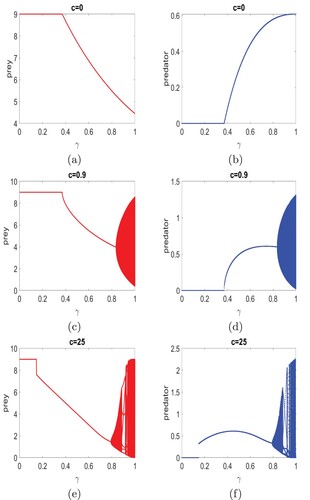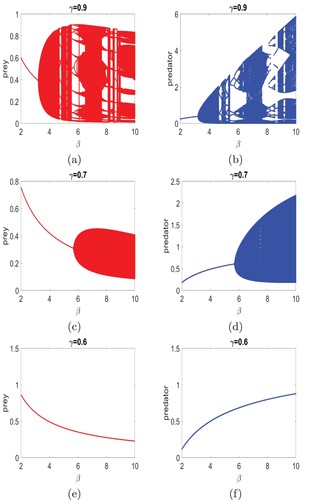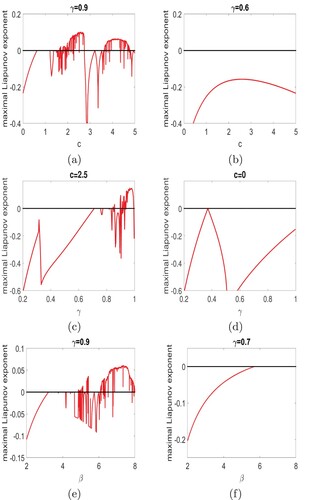Figures & data
Figure 1. The left and right panels plot components of the unique positive equilibrium and the determinant of , respectively. Fixed parameter values are
and
with c varying between 0 and 0.5. The solid and dashed curves in (a), (c), and (e) denote the x and y components of the positive equilibrium, respectively.
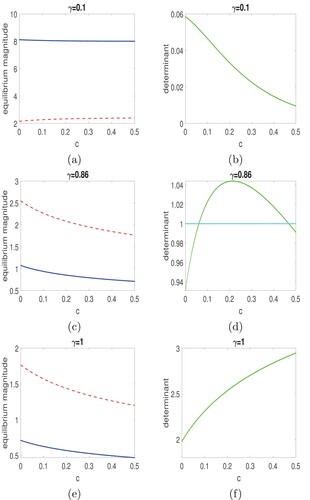
Figure 2. Phase portrait along with the unstable positive equilibrium for system (Equation2(2)
(2) ) are plotted with fixed parameter values of
,
, and
. The degree of hunting cooperation is c = 0.4 in (a) and c = 0.5 in (b). These demonstrate that hunting cooperation destabilizes the predator–prey interaction when there is no prey refuge.
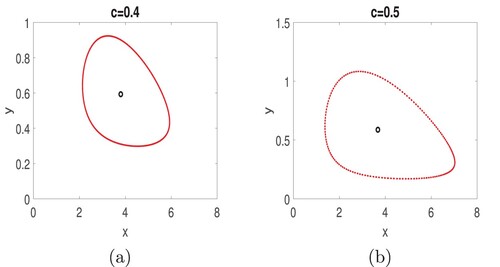
Figure 3. Fixed parameter values are ,
and
. A bifurcation diagram with respect to c is given in (a) and (b)–(c) present basins of attraction of
(in red) and of
(in cyan). The degree of hunting cooperation is c = 5 in (b) and c = 8 in (c).

Figure 4. Bifurcation diagrams with respect to c for are plotted. Fixed parameter values are
and
. The value of γ is 0.9 in (a)–(b), 0.6 in (c)–(d) and 0.3 in (e)–(f).
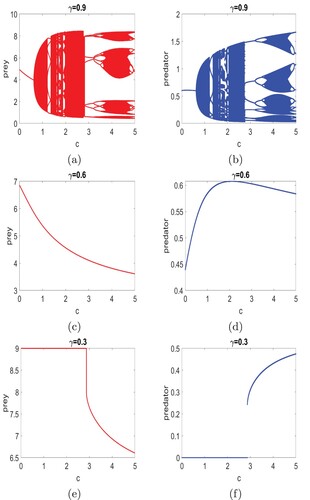
Figure 5. Bifurcation diagrams with respect to γ for are plotted. Fixed parameter values are
and
. The parameter value of c is 0 in (a)–(b), 0.9 in (c)–(d), and 25 in (e)–(f).
